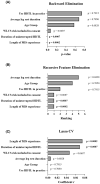Head-down tilt lithotomy position and well-leg compartment syndrome: An international survey of current practice
- PMID: 40481693
- PMCID: PMC12144681
- DOI: 10.1111/codi.70134
Head-down tilt lithotomy position and well-leg compartment syndrome: An international survey of current practice
Abstract
Aim: Well-leg compartment syndrome (WLCS) is a serious complication of prolonged surgery in the head-down tilt lithotomy (HDTL) position associated with increased postoperative morbidity and mortality. However, there is a lack of awareness and clinical guidance regarding prevention of WLCS. The aim of this study was to assess current HDTL-related practices and occurrence of WLCS among a global cohort of clinicians.
Method: An international online survey of clinicians was conducted between July and December 2023. Data analysis involved descriptive statistics, machine learning techniques and qualitative content analysis.
Results: A total of 595 clinicians from 71 countries and 14 specialities participated. Most (98%) reported routine use of HDTL, 27% of whom did not implement any preventive strategies. 'Leg rest' was the most reported preventive measure (41%), commonly initiated after 2 or 3 h of HDTL (79%), for 10-15 min (56%). Overall, 170 cases of WLCS were reported by 21% of respondents. The majority reported unilateral WLCS (81%) following a laparoscopic procedure (63%) performed in HDTL (64%). Only 28% of respondents discussed WLCS during consent for operations in HDTL. Machine learning identified 'duration of uninterrupted HDTL' as a positive predictor of the occurrence of WLCS (p < 0.001). Content analysis demonstrated that clinician perspectives and practices regarding WLCS are significantly influenced by personal experience, mostly due to a poor evidence base and lack of standardized institutional policies.
Conclusion: Perioperative practices during procedures in HDTL vary substantially, and are primarily informed by clinician experience and preferences. There is a need for evidence-based consensus on best practices to enhance safety during procedures in HDTL.
Keywords: Lloyd‐Davies; compartment syndrome; global survey; perioperative practices; prevention and management; robotic surgery.
© 2025 The Author(s). Colorectal Disease published by John Wiley & Sons Ltd on behalf of Association of Coloproctology of Great Britain and Ireland.
Conflict of interest statement
The authors declare no conflict of interest.
Figures



References
-
- Linghu E. Super minimally invasive surgery: new directions and new goals. Gastroenterol Endosc. 2023;1(1):3–4.
-
- Ismail A, Wood M, Ind T, Gul N, Moss E. The development of a robotic gynaecological surgery training curriculum and results of a delphi study. BMC Med Educ. 2020;20(1):1–7. https://bmcmededuc.biomedcentral.com/articles/10.1186/s12909‐020‐1979‐y - DOI - PMC - PubMed
-
- Cohen JG, Bixel K, Backes FJ. Role of minimally invasive surgery in gynecologic malignancies. DiSaia and Creasman Clinical and Gynecologic Oncology. 10th ed. Philadelphia: Elsevier. 2023. p. 594–614.e12. https://www.sciencedirect.com/book/9780323776844/disaia‐and‐creasman‐cli...
MeSH terms
Grants and funding
LinkOut - more resources
Full Text Sources
Medical

